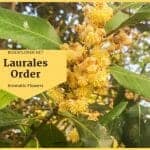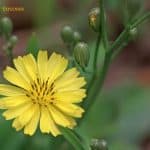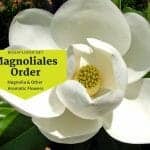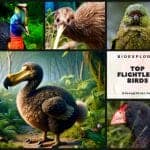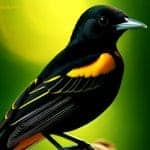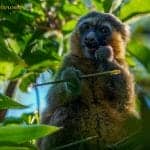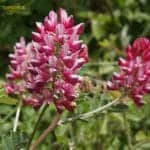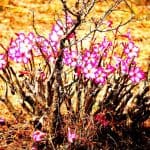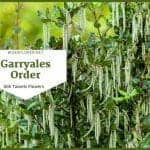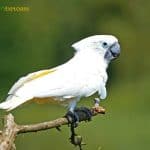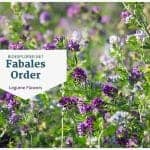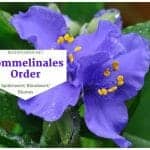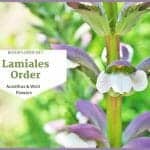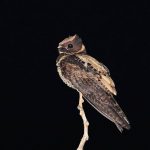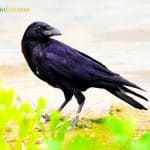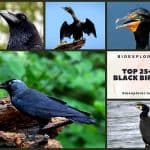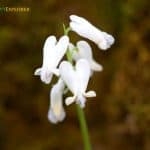science - search results
If you're not happy with the results, please do another search
Order Laurales / Aromatic Oil Flowers
Laurales is an order of flowering plants composing trees, shrubs, herbs, and vines. This order comprises seven families. Laurales species are used for lumber, medicinal extracts, essential oils, and ornamentals. Examples include Avocado, Bay Laurel, Limoncillo, Negramina, Grease Nut, Carolina Allspice & more.
Order Cucurbitales / Begonia, Cucumber & Squash Flowers
The Cucurbitales are an order of flowering plants listed in the rosid group of dicotyledons. The order consists of shrubs, trees, herbs, and climbers including Begonia, Cucumber, and Squash blossoms.
Order Amborellales / Amborella Flower
Amborellales plant order is represented by 1 species, in 1 genus and 1 family. Amborella trichopoda is the only flower species under the family Amborellaceae. Explore distribution, characteristics, flower structure, and species details here.
Order Asterales / Daisy and Sunflower
Asterales is a dicotyledonous order of flowering plants that holds ten percent of the angiosperm species diversity. Common sunflower, common daisy, Toropapa, Hydrangea, Bogbean, Water snowflake, and Cobalt mound are some of the beautiful flowers in Asterales.
Helianthus annuus
Sunflower is the common name of one of the plants in the Helianthus genus in the flowering Asteraceae family (known as the asters, daisies, or sunflower family). The inflorescence is a large disc with a 10 to 30 cm diameter and consists of 16 to 30 golden yellow florets.
Creeping Lettuce
The creeping lettuce is a flowering plant of the Asteraceae family. It is a widespread species in Japan. Being perennial, this plant grows to 0.2 meters by 0.5 meters. Ixeris stolonifera prefers moist soil and grows well in semi-shade or no shade.
Chinese Peony
Paeonia lactiflora is a flowering plant that can grow 20-28 inches tall. The Chinese Peony is a perennial herb of the family Paeoniaceae. Peony is named after Paeon, the Greek god of medicine and healing.
California Poppy
The California Poppy (Eschscholtzia californica) became California's official state flower on March 2, 1903. The four-petal desert flowers, borne on stems 8 to 12 inches (20 to 30 cm) long, are typically cream, orange, or pale yellow. Still, cultivars are white and in a variety of pinks and reds.
Order Magnoliales / Magnolia & Other Aromatic Flowers
Magnoliales is the oldest flowering order that existed before bees were evolved. Angiosperms in this order comprise 6 families, 128 genera, and approximately 3,140 species. Nutmeg, Lancewood, Magnolia grandiflora, charismatic Michelia champaca, and Degeneria roseiflora (endemic to Fiji) are some of the examples of Magnoliales order.
Order Metteniusales / White Pear Blossoms
Metteniusales are trees, shrubs, or lianas with chiefly tropical distribution. Metteniusales is an order of flowering plants with only 1 family, 11 genera, and 55 species. Metteniusaceae is the only family of Metteniusales. The members are found in the tropical regions of the Old World, Mexico, Central America, and the West Indies.
July Birth Flowers
Dive into the captivating meanings behind July birth flowers: Larkspur and Water Lily. Learn how to honor July-borns with these vibrant blossoms.
85 Different Types of White Flowers For Your Garden!
Discover the captivating world of the top 85+ white flowers, from the iconic Lily of the Valley to the lesser-known Snowball Viburnum. Explore their enchanting beauty, rich symbolism, and fascinating scientific facts in this comprehensive guide.
Marine Iguana
A comprehensive guide to the Galápagos marine iguana (Amblyrhynchus cristatus) - the world's only seagoing lizard. Learn all about their taxonomy, adaptations for life in coastal habitats, feeding behaviors, social dynamics, threats to survival, and conservation status of this iconic species endemic to the Galápagos Islands of Ecuador.
Top 34 Flightless Birds of All Times!
Flightless Birds: Insight into how birds adapted over time to live grounded lives. This article explores major flightless species - from giant moas to tiny kiwis and curious penguins - examining how isolation and lack of predators drove anatomical changes forfeiting skies for land locomotion mastery.
Albino Bats
Albino Bats - Discover the genetic causes, physical traits, geographic hot-spots, and conservation efforts surrounding these rare pigment-less morphs that persist in tropical caves and forests through 60 global cases across 11 families.
Puerto Rican Oriole
The Puerto Rican Oriole is a striking black songbird with bold yellow patches on its lower belly and shoulders. Endemic to Puerto Rico, it inhabits forests, mangroves, plantations, and especially areas with palm trees, where it weaves hanging basket nests beneath palm leaves. Both sexes look alike and sing, producing complex songs made of up to 27 different notes. Omnivorous, it forages for insects, fruit, lizards, nuts, and grains in dense vegetation. Family groups often remain together after breeding. Threats include habitat loss and nest parasitism by shiny cowbirds, but the species is still classified as Least Concern.
Top Immunology News of 2022
Discover 2022's key immunology breakthroughs: novel asthma treatments, HIV 'memory' cells, mRNA vaccine insights, and allergy research advancements.
Golden Bamboo Lemur
Explore all about the magnificent yet critically endangered golden bamboo lemur of Madagascar. This unique primate depends almost entirely on giant bamboo for food and shelter. Read about their adaptations, ecology, reproduction, conservation efforts, and threats facing their fragile habitat.
Top 15 Genetics News of 2021
This Genetics news highlights the discoveries and innovations in Genetics in 2021. It emphasizes the genetic basis of various diseases and illnesses, including schizophrenia, aortic aneurysms, liver cancer, and other lifestyle diseases, the genetic basis of embryonic stem cell development and more. Explore top 15 Genetics news of 2021.
Albino Ferrets
Explore the intriguing world of Albino Ferrets - their unique genetics, characteristics, care needs, and challenges in the wild. Uncover the joy of owning one!
Albino Deer: A Rare and Fascinating Genetic Mutation
Albino deer are extremely rare and fascinating genetic anomalies. This in-depth guide covers what albino deer are, why they're white, where they're found, major challenges they face, controversies surrounding them, seeing them in zoos, and reasons we find these mystical-looking white deer so captivating.
Order Myrtales / Myrtle Flowers
Myrtales, the myrtle order, are trees, shrubs, herbs, and lianas primarily distributed in the tropics and warmer regions worldwide. Myrtales members have phloem tissue on each xylem side, 4 or 5 sepals, 4 or 5 petals, mostly bisexual flowers, and often non-endospermic seeds. Known species of Myrtales are myrtles, evening primroses, Fuschia, and Eucalyptus.
Order Ericales / Heathers and Primrose Flowers
Ericales is comprised many economically important flowering plants like Brazil nuts, kiwifruit, and primrose. Ericales is very diverse, involving chiefly trees and terrestrial shrubs that are cosmopolitan in distribution. Some families of Ericales possess the ability for aluminum accumulation. Hardy kiwi, Orange jewelweed, wand plant, lama tree, and Octotillo flowers are some examples of Ericales.
Hedysarum
Hedysarum coronarium, commonly known as sulla clover, sulla, or French honeysuckle, is a perennial or biennial herbaceous plant that generally grows up to 3 feet tall is equal in width. The bright red, extremely fragrant, pea-like flowers bloom from the end of spring to the beginning of summer in dense axillary clusters on upright flower stalks.
Desert Rose
The Desert rose plant is an evergreen, deciduous shrub of the Gentianales order. Desert roses can grow from 3.3 to 9.8 ft. It is a trendy ornamental plant with plumeria-like flowers.
Order Nymphaeales / Water Lilies
Order Nymphaeales is composed of water lily flowers. It contains 3 families (Hydatellaceae, Cabombaceae, and Nymphaceae). The example flower species include Europian white water lily, Dotleaf water lily, Blue lotus, Amazon water lily, Fanwort, Green Cobomba, and more.
Order Garryales / Silk Tassels Flowers
The Silk tassel order, Garryales are trees or shrubs distributed in North America and Asia. The members of the Garryales have opposite and exstipulate leaves, distinct male and female plants aggregated in catkins, usually sepaline perianth, and endospermic seeds. The larkspur, Japanese laurel, and silk tassels are the example species of the Garryales order.
Order Solanales / Potatoes & Nightshade Flowers
Solanales or the potato/nightshade order of the flowers belong to the core asterid clade, manifesting a global distribution. The plants of Solanales possess root stalks or tubers, simple, alternate, and exstipulate leaves, showy flowers, and typically 5-merous floral parts. The Solanales plants are monoecious, andromonoecious, or dioecious. Example species under Solanales order involve the highly cultivated flora of morning glory, potato, eggplant, and tomato.
Japanese Camellia
While many flowering shrubs (Camellia japonica) peak in Summer, the Camellia flower is endemic to Japan and it is unique because it mainly blooms in early spring and late winter. There are nearly 300 species of Camellia, the color of which includes white, pink, and red.
Common Peony
Paeonia officinalis is a perennial herb native to the mountainous regions of Southern Europe. The Common Peony plants belong to the order Saxifragales and the family Paeoniaceae. The genus Paeonia comes from the Greek name Paeon meaning a god’s physician.
Mums
Mums are available in various flower colors, including red, orange, pink, yellow, white, salmon, cream, burgundy, and bi-colors. Mums are the Chrysanthemum genus flowering plants in the Asteraceae family, native to northeastern Europe and eastern Asia. There are 40 known species and thousands of cultivars of chrysanthemums.
November Birth Flowers
Delve into the world of November birth flowers – chrysanthemums and peonies. From symbolism to stunning arrangements, find inspiration today!
Top 15 Genetics News of 2022
Explore 2022's top genetics breakthroughs: AI in gut gene research, zebrafish atlas, NAFLD insights, longevity studies, and more in this comprehensive Genetics News of 2022 overview.
White Cockatoo
Discover the breathtaking beauty of the White Cockatoo (Cacatua Alba), their characteristics, diet and several interesting fun facts about them here.
What Do Marine Biologists Do?
Discover how marine biologists unlock the mysteries of aquatic life and protect our oceans' delicate ecosystems. Immerse yourself in this captivating field today!
Order Gentianales / Gentian Flowers
The Gentianales (Gentians) is an order of flowering plants involving herbs, shrubs, undershrubs, lianas, and small trees primarily distributed worldwide. Plants of Gentianales mostly have opposite leaves, interpetiolar stipules, bisexual flowers, mostly fused sepals and petals, 4-5 stamens, and 2 carpels. Important species under Gentianales are coffee, periwinkle, oleander, and gentian.
Order Fabales / Legume Flowering Plants
Fabales is an order of dicotyledonous flowering plants belonging to the Rosid I group of the core eudicots. The order is divided into 4 families called Fabaceae, Polygalaceae, Quillajaceae, and Surianaceae. Soybeans (Glycine max), Garden peas (Pisum sativum), Peanuts (Arachis hypogaea), and Alfalfa (Medicago sativa) are some of the plants classified under this order.
Order Commelinales / Spiderwort & Bloodwort Flowers
The plant order Commelinales is a highly diverse group of APG IV classification systems. The most common and useful plants which represent the value of Commelinales are its ornamental plants which are primarily grown in houses and outdoors. Spiderworts, Bloodworts, Blumes, Frogmouth, Wolly waterlilies, and Pickerel-weed Plants are some of the examples in Commelinales order.
Order Lamiales / Acanthus & Mint Flowers
Lamiales is an ordering of flowering plants with most members found worldwide. The species of the Lamiales usually have opposite leaves, bilaterally symmetrical and often bilabiate corolla, five petals fused into a tube, four or fewer fertile stamens, and a superior ovary with fused carpels. The mints, olive, bladderworts, and plantain are plants under the Lamiales order.
Hibiscus Varieties
Dive into the vibrant world of hibiscus! Explore 25+ stunning varieties, from rare native species to popular garden favorites. Learn about their unique characteristics, care tips, and fascinating facts. Perfect for gardeners and flower enthusiasts alike. Discover the beauty and diversity of these tropical treasures!
Top 15 Evolutionary Biology News of 2022
This series of evolutionary biology news of 2022 gives us a detailed overview of the recent development in this field. Commencing with the evolution of plant colonization on land, the new approach of Neo Darwinism gained importance and more.
Explore 13 Different Shapes of Bacteria
The prokaryotic kingdom consists of unicellular microscopic microorganisms called bacteria. Bacteria are simple single-celled organisms that lack chlorophyll pigments. The rigidity of its cell wall determines the shape of a bacterium. Explore 13 different shapes of bacteria here.
Top 15 Botany News of 2022
Botany News of 2022: Explore the latest advancements in plant science, including methane emissions by trees, epigenetic changes, wearable sensors for transpiration detection, and more.
Top 15 Biotechnology News of 2022
The 2022 biotechnological innovations paved the way for stem cell therapies, cannabinoid trichomes' roles in plant defense mechanisms, inventory methods to utilize human waste, the role of quick mRNA vaccines and more.
Top 15 Biochemistry News of 2022
Biochemistry News of 2022: This series of biochemistry news gives us a detailed account of the recent development in this field, including two proteins (Elastase and histone H2A) in defense against COVID-19 and more.
Top 15 Anatomy And Physiology News of 2022
Anatomy/Physiology News of 2022: Discover breakthroughs in organ transplant technology, multi-organ chips, Alzheimer's research, X-ray immunotherapy, astronauts' brain studies, and more.
Top 15 Microbiology News of 2022
Microbiology News of 2022: Plant-based organic acid kills food-poisoning bacteria, bacteria turned into renewable energy, plastic waste creates antibiotic-producing bacteria, microbes as biofertilizers, antibiotics repurposed, and more.
Top 15 Cell Biology News of 2022
This cell biology news of 2022 series gives a detailed overview of the recent advancements (chromosomal segregation machinery, tiny chemical PROTAC targets cMyc and EZH2 in cancer cells and more).
Types of Trees
Discover the diverse types of trees, from deciduous to evergreen. Enjoy vivid pictures, and learn their roles in ecosystems and their conservation efforts.
Great Eared Nightjar
In the heart of the night, when the world seems to hold its breath, the Great Eared Nightjar takes flight. This nocturnal bird, known scientifically as Lyncornis macrotis, is a captivating creature that has long intrigued ornithologists and nature enthusiasts.
Carrion Crow
The Carrion Crow is a medium-sized, glossy black bird native to Europe and Asia, recognized for its deep, guttural “kraa” call and solitary habits. Adaptable to a wide range of habitats-including woodlands, farmland, moors, coastal cliffs, and urban areas-it often perches in high places to survey its surroundings. Highly intelligent, Carrion Crows use tools, recognize human faces, and even cooperate with each other to hunt or defend territory. Their diet is varied, consisting of carrion, insects, seeds, fruit, and small animals. Offspring from previous years sometimes help parents feed new chicks.
American Crow
The American Crow is a large, glossy black bird recognized by its distinctive “caw” and confident walk. Common throughout North America, it thrives in a variety of habitats including forests, fields, towns, and cities. These birds are highly social, often living in family groups and gathering in large communal roosts during winter. American Crows are omnivorous and opportunistic, eating insects, seeds, small animals, carrion, and human food scraps. Notably intelligent, they are skilled problem solvers and quick learners. American Crows are curious, cooperative breeders, and adapt well to both urban and rural environments.
Black Birds
Discover the top 30+ black birds' mesmerizing beauty, unique behaviors, and fascinating facts. Dive into a symphony of wings and feathers as we explore these captivating dark birds shedding light on their mysterious allure.
16 Immortal Animals Who Defy Death
While all cells grow, age, and die eventually, here is a list of the 16 amazing immortal animals for whom this rule does not seem to apply.
Top 27 Biology-themed Movies
Biology, in the simplest terms, is defined as the study of living organisms. The top 27 biology movies showcase biological concepts and other related scientific fields. Now, who says that you cannot learn while having fun simultaneously?
Top 11 Animals With Super Sensors
While it is known that humans have developed brains, here are 10 animals with the best sensors (seeing, smelling, hearing, tasting, and feeling) and the corresponding anatomical structures that allow them to have so.
African Flame Lily
Gloriosa superba is a climbing herb that belongs to the order Liliales. It can grow to a height of 1 meter. The plant is considered a danger to livestock because it has poisonous properties. All parts of G. superba are toxic, especially the tubers. This may cause fatality when eaten.
Squirrel Corn
Dicentra canadensis is a perennial herb with blue-gray and fernlike foliage. This species belongs to the family Fumeriaceae. The squirrel corns are natives to the east of North America. All parts of the Squirrel Corn plant are toxic only in large quantities. However, it can also cause skin rashes.
Mulla Mulla
Ptilotus exaltatus is an annual herb endemic to Australia. This plant is a member of the order Caryophyllales. Ptilotus has about 100 species. All of the species, except 1, are endemic to Australia. For example, the beautiful colored flowered P. exaltatus is native to Australia.
Wreath Lechenaultia
Lechenaultia macrantha is a small herbaceous plant from the Goodeniaceae family. It usually grows 150 mm or less. The Wreath Lechenaulta flowers, when viewed from above, show an attractive wreath-like form.


